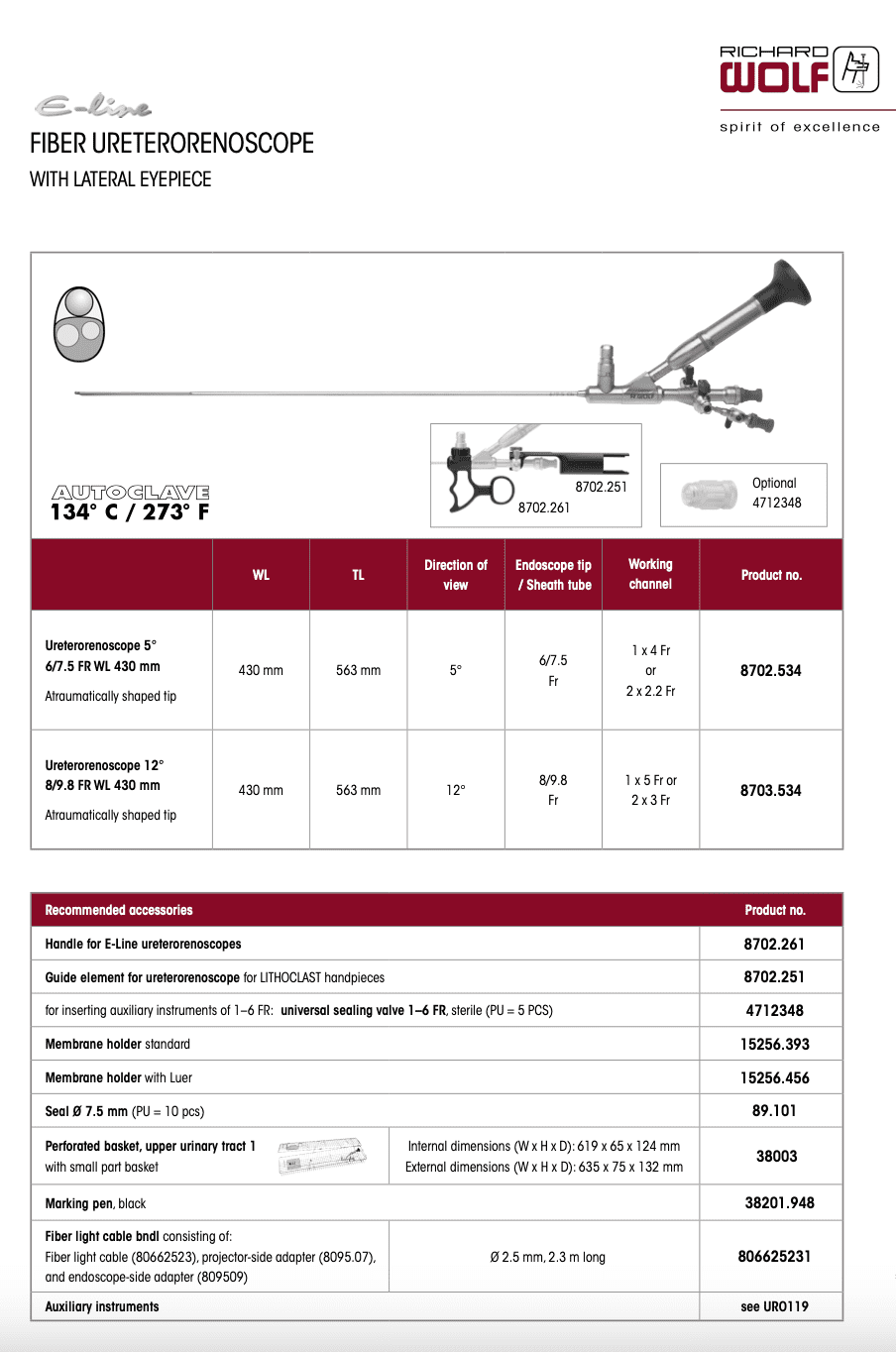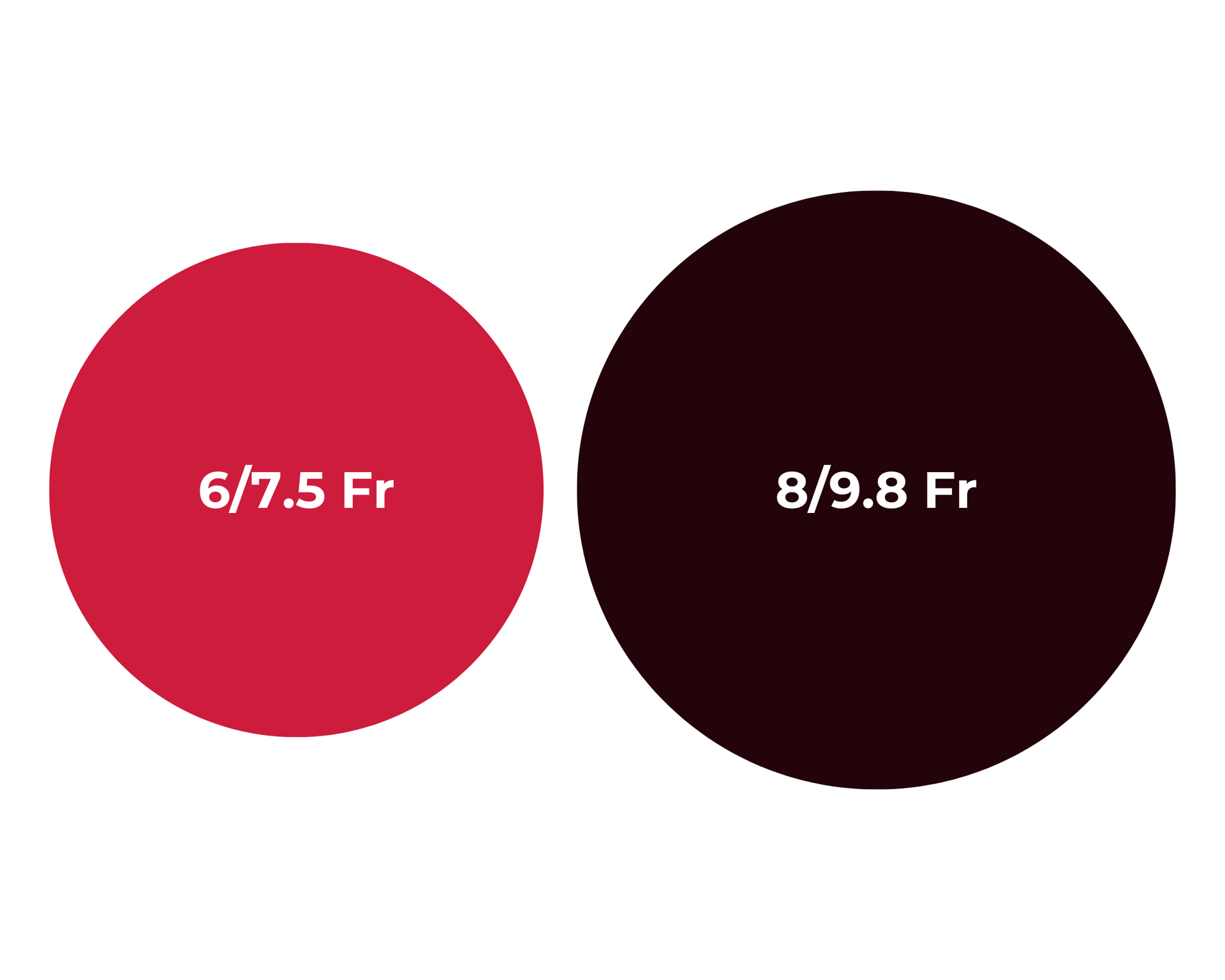What is a Uretero-Reno Scope (URS)? The Uretero-Reno Scope (URS) is a crucial instrument in Endourology, primarily used for the diagnosis and treatment of various urinary tract conditions, particularly ureteral and renal stones. It allows direct visualization of the urinary tract, enabling precise navigation and intervention.
Modern Ureteroscopes can be semi-rigid or flexible. The semi-rigid ureteroscopes are most useful for distal ureteral interventions. They are available in sizes of 7 to 12 Fr and have large, often dual, 3 to 6 Fr working channels for better irrigation and larger accessory instruments like baskets and lasers. Compared to the flexible instrument, the semi-rigid ureteroscope has the added benefits of lower cost, greater durability, larger and/or dual working channels, and easier maneuverability resulting in shorter operating times – an additional driver of reduced cost.
Evolution of URS Based on Size: Over the years, URS technology has evolved significantly, particularly in terms of size. Smaller caliber URS scopes, such as 6/7.5 Fr, have emerged as alternatives to traditional larger scopes (8/9.8 Fr). These smaller scopes offer advantages in terms of reduced patient discomfort, improved flexibility for accessing difficult-to-reach areas, and decreased risk of ureteral trauma.
Safety of Smaller 6/7.5 Fr URS vs. 8/9.8 Fr URS Recent research has explored the safety and efficacy of smaller caliber URS scopes compared to larger ones. Studies have demonstrated comparable stone clearance rates and complication rates between smaller and larger scopes, with the added benefits of reduced postoperative pain and shorter hospital stays associated with smaller scopes.
Different Energy Sources for URS: URS procedures often utilize various energy sources for stone fragmentation, including:
- Pneumatic Lithotriptors: These devices utilize pneumatic energy to break down urinary stones into smaller fragments, facilitating their removal.
- Laser Lithotripsy: Laser energy delivered through fiber-optic cables is highly effective in fragmenting stones, particularly hard or large ones, with minimal collateral damage to surrounding tissues.
Recommended Accessories: Essential accessories for URS procedures include:
- Stone Retrieval Baskets: Used for grasping and removing stone fragments from the urinary tract.
- Guide wires and access sheaths: Facilitate the passage of the URS scope through the ureter and into the renal pelvis. Access Sheaths Help Prevent any Damages to the Scope Lens while insertion.
- Irrigation systems: Ensure continuous irrigation of the urinary tract during the procedure, maintaining visibility and preventing thermal injury.
M-Advantage Service Support
Do You Already Have an Existing Richard Wolf URS 6/7.5 Fr That's Not Working? Why Buy, When We Can Get it Serviced.
Get Your Faulty Richard Wolf URS 6/7.5 Fr Repaired >

